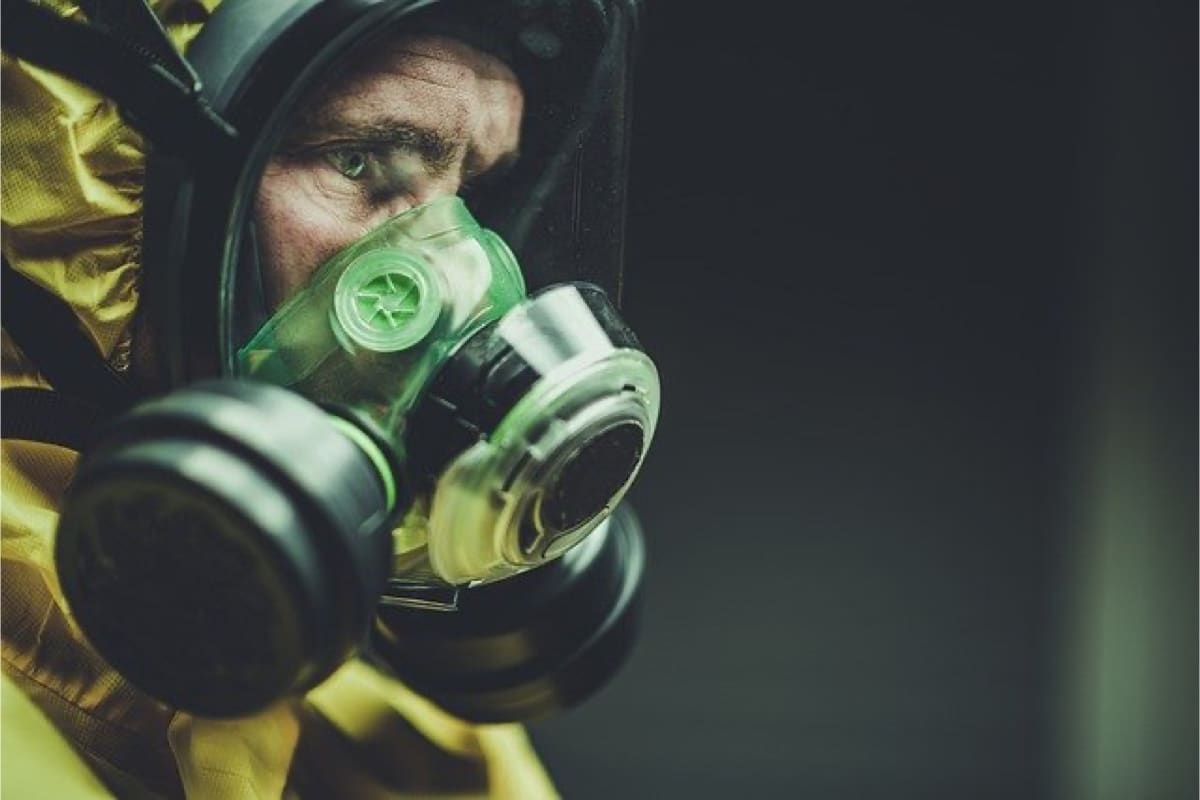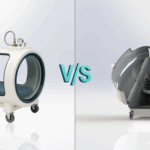This theory has done its rounds since the beginning of this pandemic. So we thought, lets get to the bottom of how dangerous it is to wear a face mask on a daily basis.
Let’s face it, wearing a mask in public is one of the most important things nowadays. Most shops refuse entrance without a mask, taxis can only transport customers who wear masks, every single sector of our world today is forced to cover their nose and mouth.
The positives
Wearing a mask reduces your chance of coughing, sneezing or spitting on surfaces, other people and on your own hands. This helps reduce the chance of you spreading anything to your community. When the rest of the community comply with wearing masks in public, the contamination rate drastically reduces. For this reason we don’t only wear masks for ourselves and our family, but also for the rest of society.
South Africa, in the most part, has done an amazing job with social distancing and complying with regular sanitization and the wearing of masks in public. Yes, there have been, and will always be a ‘special’ few people that are ‘smarter’ or more entitled than the rest of us, but in the most part “Well done South Africa!”
The negatives
There has been quite a number of complications, complaints and issues over the past 9 months regarding the continuous wear of face masks. I think the majority of people will say they feel dizzy, faint or suffocated when wearing a mask especially for long periods of time. The main reason for this is that we aren’t supposed to breathe that way. Wearing a face mask wil always be uncomfortable. But we have to wear one, so let’s look at a few handy tips to help ease our discomfort.
What can you do?
- Change masks at least twice daily. If you work an 8 hour day, wear a clean mask in the morning and switch to a new one after lunch. On hotter days your breath will make the mask even more damp, so change it 3 to 4 times depending on your circumstances.
- Wear pure cotton face masks or masks designed for better breathing. Face masks have become somewhat of a fashion statement, but try to focus on function rather than design. Thicker or vinyl printed masks have restricted airflow and gets damp quicker. Try to stay away from medical grade face masks as those are meant for the frontline workers. Support local.
- Ditch the mask when jogging or working out. This does not apply to the gym, but when working out outside, jogging or riding a bike, keep your mask around your neck. That way it’s easy to get to when you meet up with friends or enter a public space.
- Make sure you’re drinking enough fluid. For most of us having a glass of water next to your computer while working is second nature. These days, not so much. We actually have to go through a whole thing just to get a sip of water.
- Get some mask free time. For those working longer hours, it might be a good idea to take a break during the day and take off your mask. Go to a regulated mask free zone, like a coffee shop or restaurant for lunch. Most establishments have gone to great lengths to ensure the safety of their customers. Plus it’s important that we support our favorite local food shops during this very difficult year.
So, is it really dangerous?
And now the awaited question, is it actually dangerous to inhale large levels of carbon dioxide (CO2)? According to the NIH (National Institutes of Health) in rare cases it can be very dangerous. Carbon dioxide toxicity an cause the following symptoms:
- Vertigo
- Double vision
- Headaches
- Inability to concentrate
- Tinnitus (a ringing noise in your ear)
- Seizures
- Suffocation due to displacement of air
According to Dr. Bill Carroll, PhD, the emphasis should be on “high levels”. “You will have to inhale a considerable about of CO2 to cause severe harm. You can also suffer from low amounts of CO2, this is when you have shallow breaths or if you exhale too quickly. If you hold your breath, you wind up with too much CO2. The core issue is that CO2 regulates the pH of the blood—too much CO2 and the blood becomes too acidic; too little and it becomes too alkaline. In either case, your body detects the change in acidity and you pass out, which is the body’s way of saying, ‘please stop fooling with me and breathe normally.”
The long term effects
The scary thing is we have no idea what the long term effects of reduced oxygen intake and the frequent wear of face masks will be. If we look at research done in the past the effects could be dire.
Hypoxemia or Hypoxia is a condition where the oxygen levels in your blood becomes too low. Oxygen is vital in the functioning of all major organs as well as surrounding tissue. A lack of oxygen can have dire consequences.
The symptoms of hypoxia
- Headache
- Frequent cough
- Wheezing
- Shortness of breath while resting
- Severe shortness of breath after physical activity
- Decreased tolerance to physical activity
- Confusion
- Fast heartbeat
- Bluish color in skin, fingernails, and lips
Complications of low oxygen levels
As mentioned before, we have no idea how the prolonged & frequent wear of masks will effect us in the long run. But our futures might contain the following complications, should we not act now.
- Depression and other mood disorders
- Irritability
- Difficulty focusing and/or memory loss
- Get tired easily
- Muscle pains
- Acute fatigue
- Weakened immune system; easily infected by viruses, bacteria and etc.
- Frequent headaches
- Body weakness
- Chronic diseases
- Confusion
- Dizziness
- Respiratory problems
- High blood pressure (hypertension)
- Circulation problems
- Pulmonary hypertension
- Increased heart rate
- Heart failure
- Acute respiratory failure
- Digestion problems
- Acid stomach
- Secondary polycythemia, which is an abnormal increase in the number of red blood cells (RBCs)
Preventing / treating low oxygen levels
Like any other medical condition it is important to see your GP if you are suffering from severe symptoms that need diagnosing.
Preventing low oxygen levels is a lot easier. So, how do you increase the oxygen levels in your body? Well its easy, go for oxygen therapy.
Oxygen therapy can be done in multiple ways;
- Adding supplements to your diet
- Inhaling medical oxygen by use of an oxygen concentrator
- Liquid oxygen
- Ozone therapy sessions in an ozone sauna
How ozone can increase your oxygen levels
As we all know ozone = oxygen. For those new to our blog or new to ozone therapy, check out the video below explaining how it all works. You can also visit our Ozone Therapy page for further reading.
The main job ozone does is to increase the oxygen levels in your body. This then assists each and every organ, system, nerve and tissue to function at their best and to help fight off degeneration, illness and disease. Ozone therapy can be a great way for you to boost your immune not only during this pandemic, but also to improve your overall health and wellbeing in the long run.
Benefits of ozone therapy
Ozone therapy has over 100 Health Benefits. Below are a few of the benefits ozone can have on your health.
- Neutralizes toxins and impurities in the body
- Fights viruses and bacteria
- Rids the body of carbon monoxide
- Delivers oxygen to the body
- Improves blood circulation
- Strengthens the nervous system
- Clears out lungs
- Combats fatigue
- Improves memory loss & brain activity
- Combats irritability, mood swings, exhaustion and nervousness
- Purifies the blood
- Enhances uptake of vitamins and minerals
- Fights inflammation
How do I go for ozone therapy?
An ozone therapy session is a non-invasive therapy that lasts for about 30 minutes. You can do ozone therapy on a weekly or daily basis, depending on your circumstances. Ozone does help detoxify your body, so best is to start off with 1-3 sessions a week and gradually increasing it over a period of time.
Ozone therapy can be enjoyed in the comfort of your own home with one of our fiberglass ozone saunas or for those on a tight budget our portable ozone saunas.
We also have over 60 affiliated outlets in South Africa and the rest of the world. You can book your session by visiting our outlets page and finding a clinic in your area.
Conclusion
We have no idea what the future holds or even how long this pandemic will be around for. To be part of society, wearing a face mask or covering in public is a must. We should however remember to take a break throughout our day.
Remove your mask when you are in regulated areas or alone in your car. Make sure you get some form of oxygen by doing oxygen therapy. We have to look after ourselves today to prevent more complications tomorrow. We’re in this together.
Salvagente
For more information, feel free to contact us. Trading hours Mon to Friday 08:00 – 17:00 [CAT]
[email protected] | +27 (0)72 422 1967 | www.salvagente.co.za
PLEASE NOTE: As things regarding COVID-19 are changing daily, the above information may become outdated. We try our best to keep our information as up to date as possible and strive to give you only the most up-to-date information. If however you feel, that you have verified articles stating otherwise, feel free to email us and well look in to it. 






2 comments
Join the conversationS Chavan - November 5, 2020
Hi Salvagente
Ozone and oxygen are wellness tools shown by research . Otto Warburgh proved it and won the Nobel prize !
It’s regenerative in nature too .Your tools are fantastic . As a promotional supporter of your noble efforts I congratulate you as a team ! I like you do advocate regenerative wellness as an ambassador for lifewave UK and Europe with top brand in our lot X39 patch for systemic activation of stem cell naturally !,, !
I invite you to explore the possibilities of adding one more advance natural tool in wellness and partner with us?
We are just reaching out to Africa this week ! You may want to join to add this to your worthy efforts in ozone therapy
Sincere regards .
Your efforts are appreciated
Dr Sujay
UK
[Publication] Ozone Therapy featured in Devoted Magazine - Salvagente - November 6, 2020
[…] this article we discuss how ozone increases the oxygen levels in your body, what the benefits are and why you should be going for ozone therapy. Salvagente has been in the […]